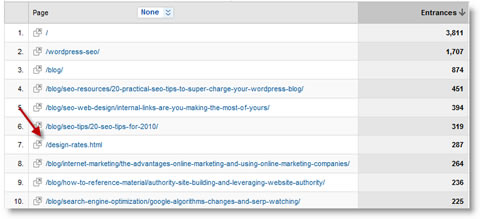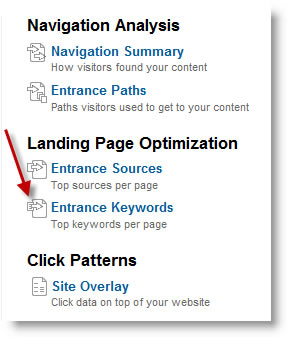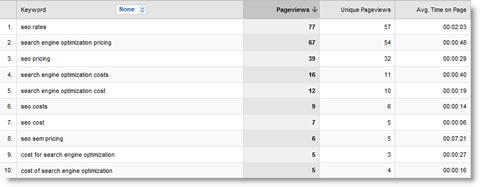If you are trying to appease search engines and optimize your content through SEO, then why not look for insights from the trail they leave behind to reverse-engineer the way they interpret semantic clusters of data and the connectedness of certain synonyms, phrases and keyword combinations.
This post discusses how to use Google Analytics to identify related keywords and use them to reverse-engineer rankings by coupling them with a simple SEO link building technique.
For example, Google and other prominent search engines that use an inverted index know “what something is” based on proprietary algorithms that conduct thousands of calculations per second and parse the entire body of documents in their index using hundreds of signals to identify patterns and characterize relevance.
Based on how broad the context is or how narrow and “exact” the group of phrases are within the query toggle in a simplified sense “a game of concentration” where agreed upon lexicons are reduced to relevance signals and pages are pulled from the index and matched with queries based on correlations that exist between the on page (title, h1, URL, internal links and keyword prominence and proximity to other synonyms, polynyms, etc.) and the off page (inbound links, references and citations from other websites) until a contextual relevance score is calculated.
This is the bases for sophisticated keyword research that uses a baseline to create corresponding bridges in relevance through identifying popular search phrases or keywords consumers already use. Then, armed with that data, search engine optimization specialists revise the existing site by adding additional pages based on tactful or liberal use of those keywords in either 1 document of several documents within the website to increase the semantic footprint and rank for a broader array of related keywords.
This is where things get interesting. If you are curious to find out what Google thinks about your page and the degree of corresponding keywords that any page could potentially appear for:
- Log in to Google analytics
- Select the page and view the keywords that drove traffic to that page and
- Copy or export those phrases and incorporate them as internal links or inbound deep links from other websites to promote keyword stemming (ranking for a broader array of related keywords).

(1) Select the Page in Google Analytics

(2) Select Entrance Keywords Option

(3) View or Export Stemmed Keyword Variations
A savvy SEO is already going to implement this type of tactic from the onset. The premise is to use a related group of keywords to link to a target page for diversity and relevance. If it never occurred to use analytics as a relevance threshold and barometer for building links, it is one more SEO tip to add to your toolbox.
Ideal metrics to assess are:
- Keyword or key phrase context
- # of visits
- SERP (search engine result page) position
- Bounce rate
- # of pages dedicated to the keyword or keyword cluster
Once you have identified these basic SEO metrics, you can then determine if you need to (a) create more pages (b) go back to legacy content to add additional keyword modifiers to related pages using the site:yourdomain.com keyword command (c) acquire additional inbound links or (d) focus on conversion optimization based on which keywords have the highest engagement and conversion.
In either instance, you are still leveraging Google’s ranking algorithm by tracing the keywords it has already deemed relevant for your website to appear for under a broad match, mid-tail or even broader long-tail (4 of more keyword) vector.
Then by reversing that output and using is as an on page and off page SEO guide, allows you to dial-in additional keyword variations since they have already left a hash mark as an effective channel that returned the document based on a previous search query.
Stay tuned for additional SEO Tips, Tactics and Techniques from SEO Design Solutions or subscribe to our RSS feed to keep abreast of posts daily.









